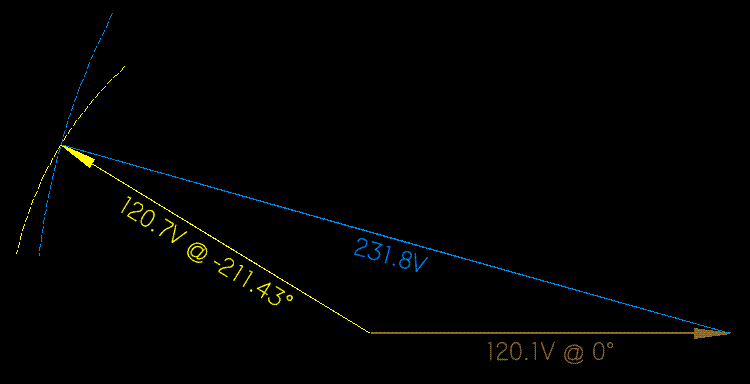Surely you guys are not going to sucker me into another discussion on this topic.
Yes, we are, and don't call us Shirley! :grin:
Okay, you guys. For the neophytes among us, read the post to which I linked in post 5, about a pair of batteries in series. Would you call it a bi-polar power supply, or a dual-voltage supply?
For the rest of us, here's a directly-applicable analogy:
Let's say we take three transformers or a single 3-ph unit, doesn't matter which, with center-tapped-secondaries, and power the primaries the usual way with either wye or delta; it doesn't matter which.
Now, we connect all three secondaries' center taps together, leaving us with a neutral and six hot leads. (This is a great way to feed a rectified power supply, by the way.) Would you call this 3-phase or 6-phase?
For those of you who (correctly, in my opinion) see the center-tapped secondary as single-phase, you'd say it's 3-phase, but if you see it as two phases, you'd say it's 6-phase. I see it as 1-phase double-ended.
Now, when it comes to DC, such as my two-batteries-in-series example, whether it's a bi-polar supply or a dual-voltage supply does depend on the reference point, as most electronic circuits have a 'chassis' ground.
If one end of the supply, usually the DC negative, is the ground, it's a dual-voltage supply, but if the center is grounded, it is a bi-polar supply, but in both cases, there's positive at one end and negative at the other.
So, back to our center-tapped secondary, sure, from the center tap's point of view, it certainly resembles two phases, but the fact that they peak at their opposing polarities at the same time makes it a single phase.
Even if we connected two separate 1-phase transformer's secondaries in series, if the primaries are driven by a single phase, the secondaries will collectively be of a single phase. Same with them paralleled, obviously.
Just as with batteries, if the secondaries can be paralleled, they're obviously single phase. If they're in series additively, the same thing applies. If they were 180 degrees out, they'd combine subtractively.



